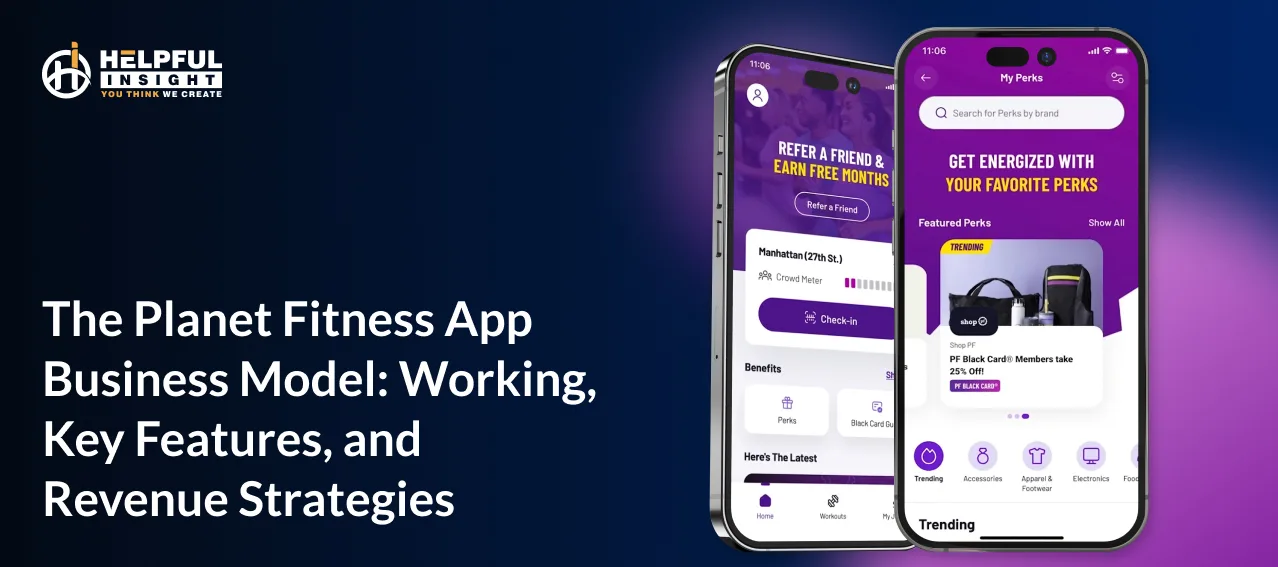In the ever-changing face of mobile app creation, React Native App development has proven to be a force to reckoning, allowing developers to craft super functional, cross-platform development for apps, with unmatched ease. It is a prevalent framework due to its talent for working with JavaScript and supporting the tools and ecosystem of advanced libraries to build great mobile experiences.
In this article, we will outline a carefully selected product analysis of the most popular mobile applications made with the React Native Framework. From Facebook to Amazon to new-gen games, these apps prove the flexibility and power of doing React Native Mobile Applications in the fields that seem the most different from each other. React Native Framework is the tool used by engineers to build and design the best apps that go through a testing process before they are available to millions of users worldwide. The app’s features, experiences, and development insights will be discussed.
What you should know about react native – statistics
According to recent statistics, over 95% of the top 100 grossing apps on iOS and Android platforms were made with React Native Framework. Furthermore, over 4 million developers are using React Native worldwide, and it is estimated that more than 1 billion devices are running mobile apps developed with this framework.
React Native Framework is the 2nd most used cross-platform mobile app development framework, with over 13% market share. React Native is still a popular choice even in 2024.
React Native: A Perfect Solution for Multi-platform App Development
React Native proves to be a solution of the revolution, for cross-platform applications by providing the highest possible speed and adaptability to the mass of react native developers around the globe. With JavaScript proficiency, React Native can drive mobile app development that can run on both iOS and Android frameworks with high fidelity.
By employing React Native components, the available react native developers may tap on one code and send it to the different ones all at once. This way, it is possible to curtail the development time and costs. Native modules integration is its basis and hot-reloading helps speed up the process of react native development, so devs can quickly re-launch an app or webpage and experiment with the available functionalities.
React Native has an extensive set of third-party libraries, plugins, and active community support, which helps speed up the mobile application development of maintained applications equipped with advanced features. The business sense of the framework is evident through the adoption of the tool by startups and tech giants in a cross-section of industries. The tool makes it possible for organizations to deliver polished native user experience and at the same time maximize code reusability and maintainability.
Why is React Native Framework a Popular Choice Nowadays?
React Native apps boast their rising popularity owes to a set of intricacies that have made them favored over native.
Firstly, its unity of code function across the platforms has the impact of cutting down development time and costs, which could be a pull factor for firm owners to have cost-efficient app solutions.
Secondly, React Native installation is fast, and this is affected by the way it uses native components. This helps the application anyone develops using React Native to be not only fast but also offer users a smooth experience.
Thirdly, a large and frenetic community constantly adds new plugins, libraries, and tools to the ecosystem extending its abilities and solving difficulties that are supposed to be encountered by a Dev. Along with this, there are lots of React Native tutorials available online you can check to find out the solutions.
Lastly, its feature of being flexible allows developers to easily incorporate React Native into the existing native codebases without creating problems of gradual migration or shifting of the focus as may be the case.
On the whole React Native’s efficiency, performance, support of the community, and flexibility were decisive factors that contributed to the popularity of this framework in the context of mobile app development in today’s fast-expanding digital landscape.
Benefits of React Native Apps
React Native offers a myriad of benefits that make it an attractive choice for mobile application development in UAE across industries. Here are some of the key advantages:
- Cross-Platform Compatibility: One of the most reported benefits of react native is that a single codebase can be used for the development of apps on multiple platforms. Developers can code once and use it for both iOS and Android platforms. This makes it quick and easy to distribute to these devices but with nearly the same user experience.
- Cost-Effectiveness: By putting effort into creating a code that will work on multiple platforms under a single codebase, React Native greatly cuts down on development costs and provides Performance optimization. Companies can reduce their expenditures as it is no longer needed to have separate teams that develop separate versions for iOS and Android devices. Consequently, they experience cost savings.
- Faster Time-to-Market: Developers can profit from the React Native hot-reloading feature which brings the changes that developers make to a code immediately to the application, speeding up the development process. Its modular and component-based design also allows developers to roll out features quickly and make changes more rapidly leading to the faster apps’ launch to the general public.
- Near-Native Performance: In the face of being a multi-platform framework, React Native is designed to mimic native performance. Via Native components React Native apps produce the topmost responsiveness, seamlessness, and speediness of the interfaces and generally provide users with a native-look experience.
- Large and Active Community: React Native has expert developers, contributors, and supporters who regularly give back to the community. It is known for its community of developers, contributors, and supporters who keep contributing to its ecosystem actively. This community-based approach enables React Native to be frequently updated with new features, improvements, as well as bug fixes. It guarantees that the developers have the freedom to manipulate a large number of resources in addition to being supported by a team.
- Reusable Components: Developers can leverage React Native components that can not only be used in different parts of the application but also across separate programs. Besides these functions, this modular approach will lead to code reusability, code maintainability as well as scalability.
- Ease of Integration: Native bridges the gap between existing native codebases, adding on native modules or other libraries with ease and without complications. In short, this flexibility would help brands port their native application architecture to build new features or improvements while leveraging the benefits of React Native.
- Developer Productivity: It is just because the React Native writers have similar JavaScript syntax and exhaustive documentation that they can get their feet grounded quickly and start running with mobile app development. Its declarative and component-based nature reduces the complexity of the development process by allowing developers to write, test, and maintain the code with less effort without the need to spend much time.
Harness the power of React Native for cross-platform mobile applications.
Top Companies Using React Native
React Native has gained immense popularity among businesses of all sizes, from startups to tech giants, due to its ability to deliver high-quality mobile apps efficiently and cost-effectively. Here’s a look at some of the top companies leveraging React Native for their mobile app development needs:
1. Facebook: The biggest social media platform for connecting people.
As the developer of React Native, Facebook naturally utilizes the framework for its mobile application. The Facebook app itself is partly built with React Native, demonstrating the framework’s capabilities in handling large-scale, feature-rich applications. Additionally, Facebook’s other properties like Instagram and WhatsApp have also adopted React Native for certain parts of their apps, showcasing its versatility and scalability.
Key features
- Efficient Cross-Platform Development: Facebook utilizes React Native to efficiently develop its mobile app for both iOS and Android platforms. With React Native’s cross-platform compatibility, Facebook can write code once and deploy it across multiple platforms, reducing development time and costs. This allows Facebook to maintain a consistent user experience across different devices while leveraging the benefits of a shared codebase.
- Near-Native Performance: Despite being a cross-platform framework, Facebook’s mobile app built with React Native delivers near-native performance. By leveraging native components and optimizations, React Native ensures smooth animations, fast load times, and responsive user interfaces. This near-native performance enhances the overall user experience, making the Facebook app fluid and responsive on both iOS and Android devices.
2. Instagram: Photo-sharing social media app platform.
Instagram, one of the world’s most popular social media platforms built with React Native extensively for its mobile app development. While not the entire app is built with React Native, key features and components have been migrated to the framework, enabling faster development cycles and smoother user experiences across platforms.
Key features
- Seamless User Experience Across Platforms: Instagram leverages React Native to ensure a seamless user experience across both iOS and Android platforms. With React Native’s cross-platform compatibility, Instagram can maintain consistency in design, features, and performance across different devices. This allows users to enjoy a consistent Instagram experience whether they are using an iPhone, an Android smartphone, or a tablet.
- Faster Iteration and Updates: React Native’s hot reloading feature enables Instagram to iterate on new features and updates rapidly. With hot reloading, developers can see the changes they make to the code reflected instantly in the app, without the need to rebuild the entire application. This speeds up the development process and allows Instagram to deliver new features and enhancements to users quickly, ensuring that the app remains engaging and up-to-date with evolving user needs.
3. Walmart: Giant retail platform
The retail giant developed React Native for its mobile app development efforts. By leveraging React Native, Walmart has been able to streamline the development process and deliver a consistent shopping experience to its customers across iOS and Android devices. React Native’s cross-platform compatibility and performance optimizations have helped Walmart enhance its mobile app’s functionality and user engagement.
Key features for the best retail platform
- Cross-Platform Compatibility: Walmart utilizes React Native to develop its mobile app for iOS and Android platforms. With React Native’s cross-platform compatibility, Walmart can write code once and deploy it across multiple platforms, saving time and resources. This ensures that the Walmart app provides a consistent shopping experience to users regardless of the device they use, enhancing customer satisfaction and loyalty.
- Enhanced Performance and User Experience: React Native enables Walmart to deliver a high-performance mobile app with a smooth and responsive user interface. By leveraging native components and optimizations, React Native ensures fast load times, smooth animations, and seamless navigation within the app. This enhances the overall user experience, making it easier and more enjoyable for customers to browse products, make purchases, and interact with Walmart’s services through the mobile app.
4. Tesla: Cutting-edge electric vehicle company
Tesla, known for its cutting-edge electric vehicles, utilizes a React Native mobile app that allows users to control and monitor their Tesla vehicles remotely. The app enables features such as unlocking doors, checking battery status, and controlling climate settings, all of which are seamlessly integrated using React Native’s cross-platform capabilities.
Key features
- Remote Vehicle Control: Tesla’s mobile app, built with React Native, enables users to remotely control their Tesla vehicles. Through the app, users can perform actions such as locking and unlocking doors, starting the vehicle, adjusting climate settings, and monitoring battery status. This functionality provides Tesla owners with greater convenience and flexibility, allowing them to manage their vehicles from anywhere using their smartphones.
- Real-Time Vehicle Monitoring: React Native powers Tesla’s mobile app’s ability to provide real-time monitoring of key vehicle metrics and data. Users can view information such as vehicle location, battery level, charging status, and driving statistics directly from their mobile devices. This feature allows Tesla owners to stay informed about their vehicles’ status and performance, empowering them to make informed decisions about their driving habits and charging needs.
5. Uber Eats: food delivery service developed by React Native
Apps like Uber Eats, the food delivery service powered by Uber, employ React Native for mobile app development. React Native enables Uber Eats to deliver a smooth and intuitive user experience to customers ordering food from their favorite restaurants. With React Native, Uber Eats can rapidly iterate on new features and enhancements while maintaining a consistent user interface for iOS and Android platforms.
Key features
- Cross-Platform Compatibility: Uber Eats utilizes React Native to develop its mobile app for both iOS and Android platforms. With React Native’s cross-platform compatibility, Uber Eats can write code once and deploy it across multiple platforms, streamlining the development process and ensuring a consistent user experience for customers regardless of the device they use. This allows Uber Eats to reach a wider audience and maximize its market presence while maintaining development efficiency.
- Real-Time Order Tracking: React Native powers Uber Eats’ real-time order tracking feature, which allows customers to track the status of their food delivery from the moment they place an order to the moment it arrives at their doorstep. Through the app, customers can view the location of their delivery driver in real-time on a map, along with estimated arrival times and status updates. This feature enhances transparency and communication between customers and delivery drivers, providing customers with peace of mind and a seamless delivery experience.
6. Airbnb: global hotel booking app developed by Flutter
Apps like Airbnb, the global online marketplace for lodging and travel experiences, utilize React Native for their mobile app development. React Native allows Airbnb to efficiently develop and maintain its app while ensuring a seamless user experience for travelers and hosts worldwide. By leveraging React Native’s cross-platform capabilities, Airbnb can deliver updates and improvements to both iOS and Android users simultaneously.
Key features
- Search and Booking: Users can search for accommodations based on location, price, amenities, and dates, and book directly through the platform.
- Host and Guest Profiles: Both hosts and guests have profiles with reviews and ratings, helping to build trust within the community.
- Messaging System: Airbnb provides a messaging system for hosts and guests to communicate directly, facilitating the exchange of important information.
- Secure Payment: The platform offers secure payment processing, giving both hosts and guests peace of mind.
- Host Tools: Hosts have access to tools for managing bookings, setting pricing, and communicating with guests.
- Review System: Both hosts and guests can leave reviews after a stay, which helps maintain accountability and transparency within the community.
7. Discord: social media platform for gamers and communities built with React Native
Discord, a popular communication platform for gamers and communities, has adopted React Native for its mobile app development. React Native enables Discord to provide a feature-rich and responsive user experience to millions of users across different devices. With React Native, Discord can rapidly implement new features and optimize performance, ensuring that gamers can stay connected anytime, anywhere.
The key features of Discord:
- Text and voice chat capabilities.
- Organized server structure for communities.
- Customizable roles and permissions.
- Support for multimedia content like gifs and emojis.
- Bots for automation and moderation.
- Integration with other apps and services.
- User-friendly interface for seamless communication.
8. Bloomberg: biggest financial services company
Bloomberg, a global financial services company, leverages React Native for its mobile app development initiatives. React Native enables Bloomberg to deliver real-time financial news, market data, and analysis to its users on both iOS and Android platforms. By using React Native, Bloomberg can efficiently maintain its mobile app while meeting the demands of its diverse user base.
Key features of Bloomberg:
- Real-time Financial Data: Bloomberg provides up-to-the-minute financial data, including stock prices, market indices, and currency exchange rates.
- News Coverage: It offers comprehensive news coverage across various industries, including finance, technology, politics, and more.
- Analytics Tools: Bloomberg’s analytics tools allow users to analyze financial data, create charts, and conduct in-depth research.
- Terminal Services: The Bloomberg Terminal is a powerful tool used by professionals for trading, analytics, and market monitoring.
- Bloomberg TV: Bloomberg provides a 24-hour television network covering financial news and analysis.
- Research Reports: Users have access to research reports from Bloomberg analysts and other financial experts.
- Messaging and Collaboration: Bloomberg’s messaging platform allows professionals to communicate securely and collaborate on trades and market analysis.
- Data Visualization: Bloomberg offers advanced data visualization tools, making it easier for users to understand complex financial data.
- Portfolio Management: Users can track and manage their investment portfolios using Bloomberg’s portfolio management tools.
- Regulatory Compliance: Bloomberg helps users stay compliant with financial regulations by providing access to regulatory information and tools for compliance monitoring.
9. SoundCloud: the world’s largest music streaming platform developed with React native
SoundCloud, the world’s largest music streaming platform, utilizes React Native for its mobile app development. React Native allows SoundCloud to deliver a seamless listening experience to users while optimizing performance and reducing development time. With React Native, SoundCloud can iterate quickly on new features and updates, keeping pace with the evolving needs of music enthusiasts worldwide.
Key features of SoundCloud:
- Music Streaming: SoundCloud allows users to stream millions of songs from various artists and genres.
- User-Generated Content: It’s a platform where both established and emerging artists can upload and share their music, fostering a diverse range of content.
- Discovery: Users can discover new music through personalized recommendations, curated playlists, and trending tracks.
- Social Interaction: It offers social features such as following other users, commenting on tracks, and sharing music across different platforms.
- Community Engagement: Artists can connect with their fans directly through SoundCloud, building a loyal fanbase and receiving feedback on their work.
- Mobile App: SoundCloud has a user-friendly mobile app for both iOS and Android, enabling users to access their favorite music on the go.
- Pro Plans: It offers subscription plans for artists and content creators, providing additional features like advanced analytics, monetization options, and more upload time.
10. Tencent: leading technology conglomerate built with React Native.
Tencent, a leading technology conglomerate based in China, employs React Native for various mobile app projects. React Native enables Tencent to develop and maintain high-performance apps for its diverse portfolio of products and services, spanning messaging, social networking, gaming, and more. With React Native, Tencent can deliver innovative mobile experiences to its vast user base while maximizing development efficiency and scalability.
Key features of Tencent:
- Diverse Portfolio: Tencent has a diverse range of products and services, including social networking (WeChat), gaming, entertainment (Tencent Video), e-commerce, and fintech.
- WeChat: WeChat is one of the world’s largest standalone mobile apps, offering messaging, social media, mobile payment, and other functions, with over a billion monthly active users.
- Gaming Powerhouse: Tencent is a major player in the gaming industry, owning or holding stakes in several popular game developers, including Riot Games, Supercell, and Epic Games.
- Digital Services: Beyond gaming and social media, Tencent offers various digital services such as cloud computing, advertising, and online media.
- Investment Strategy: Tencent is known for its strategic investments in both domestic and international tech companies, contributing to its vast ecosystem and global influence.
- Market Dominance: Tencent’s dominance in the Chinese tech market gives it considerable power and influence, making it a key player in shaping trends and innovations.
Tailored solutions to create high-quality apps for any platform.
Conclusion- React Native: Crafting High-Performance Mobile Apps
Leveraging React native, top React native app development companies have powered numerous” successful apps across diverse industries, including Instagram and Walmart. Its versatility and performance make it a top choice for react native developers. With ongoing support and enhancements, React Native is a leading framework for mobile app development.
Boost user engagement and retention with our cutting-edge React Native solutions – revolutionize your app experience now!












